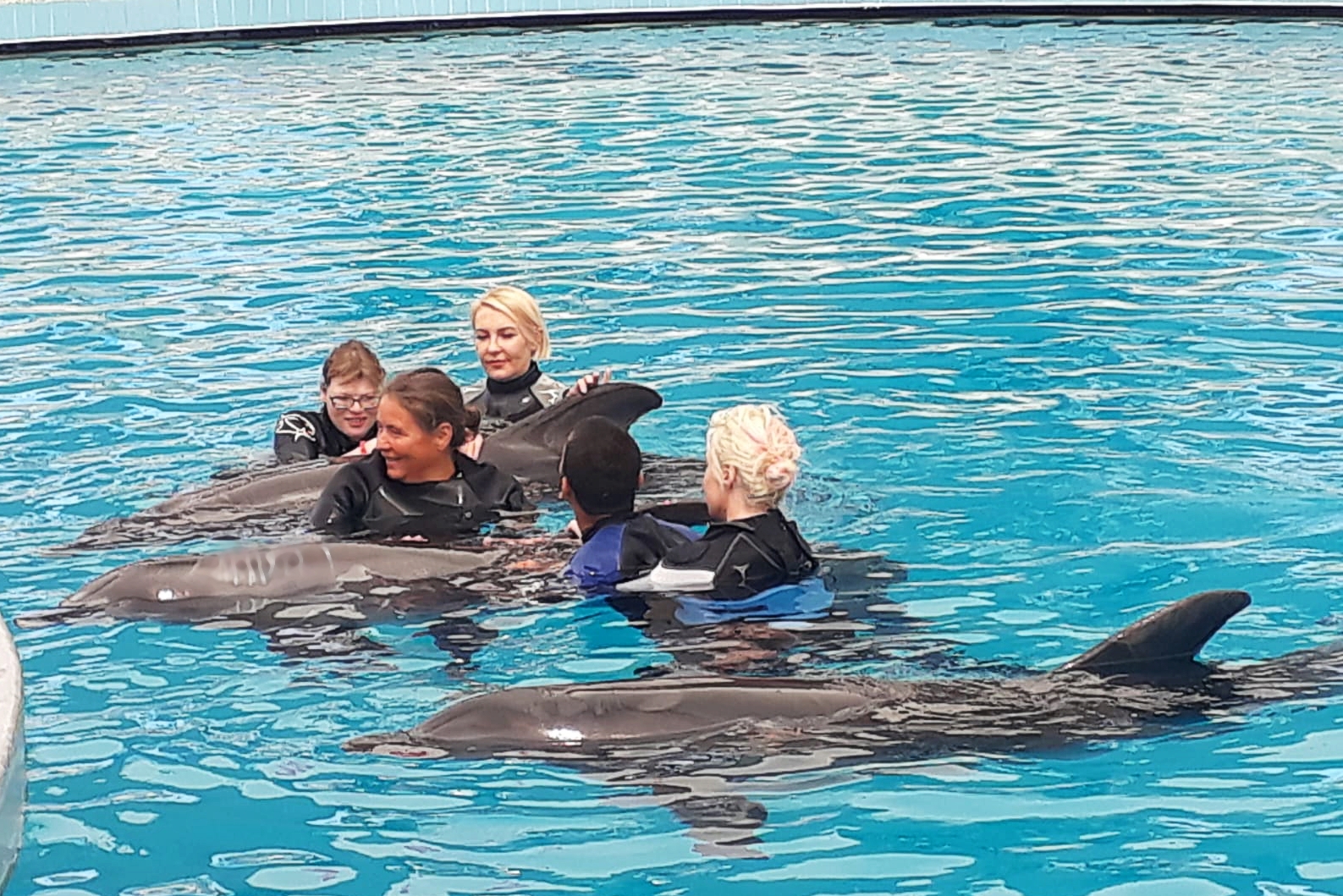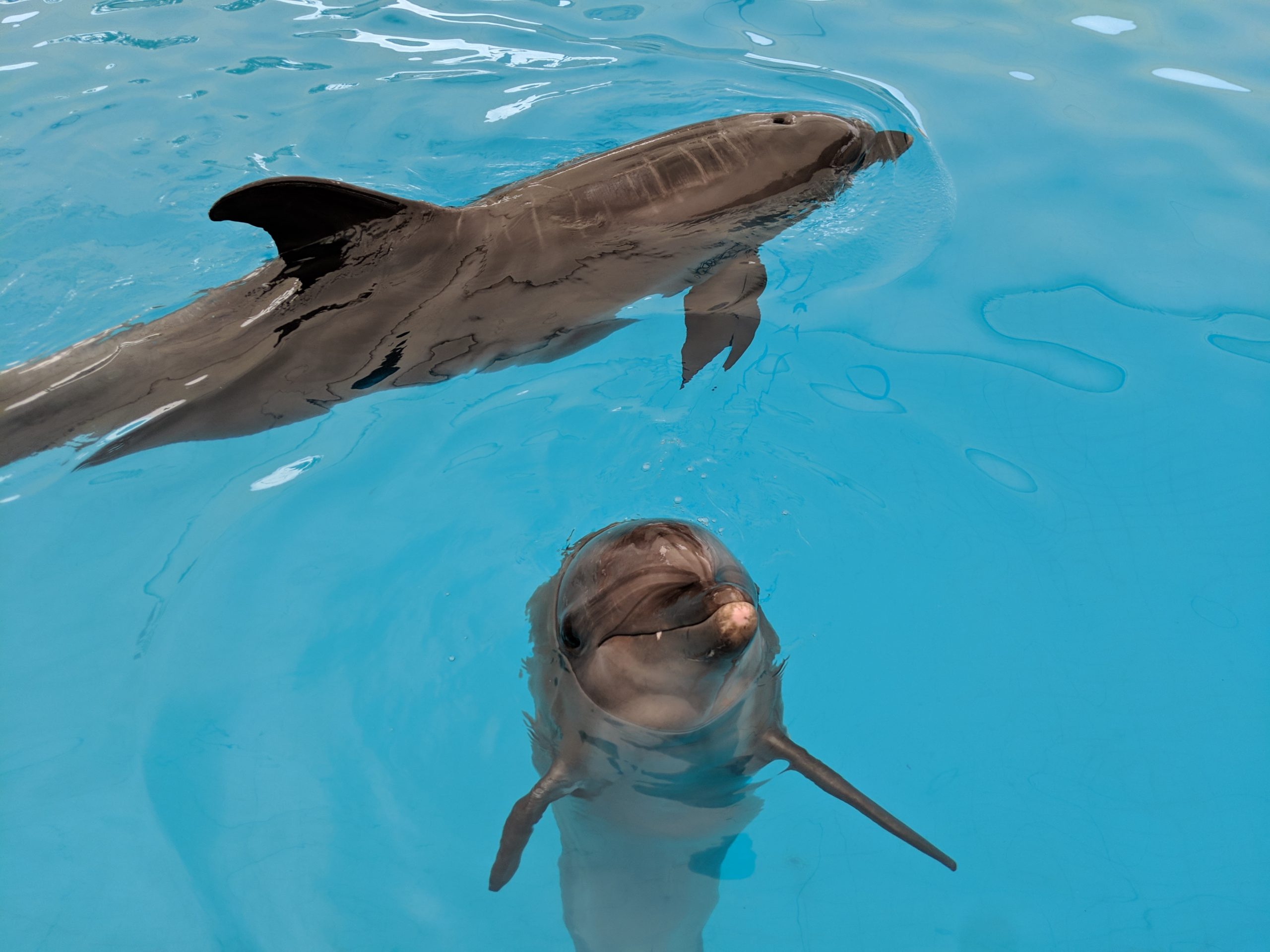ABOUT DOLPHIN ASSISTED THERAPY (DAT):


Many of us are familiar with animals, and how they make us feel. It almost feels therapeutic, doesn’t it? How does it work?
DeMares may have said it best in response to his study: “Connecting with another being and ultimately being fully connected within oneself is the underlying desire of the cetacean-triggered experience. The feelings that are part of this process – intention, eye contact, connectedness, aliveness, and harmony– provide the human with validation and a benchmark against which personal growth can be measured. Being completely connected to another being, as well as with oneself, is the underlying desire of the Delphi. The feelings that occur—intention, eye contact, closeness, vitality, and harmony – place the person in a moment of truth or give a clue, with which they can measure their personal development.” (Alpha Therapy)
In therapy, we have been implementing alternative methods and holistic approaches for decades. One of these methods is Animal Assisted Therapy. Animals are historically known for their therapeutic effects. In particular, Dolphin Assisted Therapy (DAT) is becoming a more well- known method to heal and bring happiness.
Dolphin-Assisted Therapy is a form of animal-assisted therapy that has been studied for over 50 years and applied for about 25 years. Looking deeper into ancient history, we read about the relationship between humans and dolphins. This led to humans befriending dolphins and worshipping them as gods. We can look to the century-old stories about the friendship and cooperative fishing practices between dolphins and humans in fishing villages, and the heroism and protection witnessed towards humans by dolphins.
Distinct, well-developed social skills characterize dolphins. Their social interaction is very complex and variable; thus, it is highly sought out to understand further. Dolphins demonstrate very strong social bonds, that are “Altruistic” behaviour when defending and caring for one another. This altruistic behaviour is not only specific to their own kind, and has historically shown to carry over to humans in need. (Alpha Therapy)
Many reports on dolphins demonstrate their help to castaways at sea by providing humans with defence and protection in shark attack situations. Studies by Lilly, left & Brensing were also able to reveal altruistic behaviour in dolphins. They determined that dolphins generally prefer contact with children over adults. (Alpha Therapy) Playing is an important aspect of the dolphins’ daily routine and social interactions, making this specific mammal special and confirming their high intelligence; thus, deeming them ideal therapists
Dolphins have a natural curiosity and are also very docile, helping them easily form friendships and bonds. They are very social and have a strong desire to connect and interact with humans. This provides a stimulating environment for our patients to experience an entirely new approach to therapy and healing. Interaction with dolphins during therapy is a vital element of our work.
Concerning socialization, the communication of specific species of dolphins has been understood to take place verbally, using dolphin body language, ultrasound, and physical interaction. Dolphins communicate with each other underwater through acoustic signals that the human ear cannot hear, including clicks for echolocation, high pitched whistle sounds for detection signal, and acoustic signals in the low-frequency range, as well as more specific sounds. The whistle is considered the dolphin’s signature, in which they use for identification and keep their entire life.
In contrast, the so-called clicks produced by a dolphin are the active signal a dolphin uses to cast out echolocation. Echolocation, also known as SONAR, is ideally described as a sensory system that allows the dolphins to detect objects underwater. This is performed via emission of acoustic signals, with a responsive recording of the sound reflections from the objects they detect. “It has been shown dolphins do not only stimulate the people mentally, but also neurologically.” (Alpha Therapy) “Contributing to this finding are EEG measurements that demonstrated a significant reduction in the brain wave frequency and hemisphere synchronization during dolphin interactions in the Alpha/Theta crossover area.” (Alpha Therapy)
“The sonophoresis theory by David Cole explains these effects on the action of the light emitted by the dolphin ultrasound (SONAR). His theory suggests that intra- and intercellular membranes are stimulated by the ultrasound of the sea’s mammals, which stimulates the metabolism and the conduction at the synapses.” (Alpha Therapy)
The dolphin is not a visually oriented mammal. The dolphin’s visual center occupies about one- tenth of the human scale, is not designed for binocular vision, and lacks color vision; however, they have a higher density of nerve cells. SONAR has evolved as their unique nature for hearing in response to adaptation requirements in their marine environment. As a result, the auditory center located in the Temporal lobe is ten times bigger than humans. With the assistance of the “melon” and the “intramandbulare” system, dolphins can produce ultrasound waves and combine them into an arbitrarily narrow cone or beam, depending on the distance and size of the object scanned. (Alpha Therapy) The outgoing reflections of the object that is being focused on are absorbed on the lower jaw bone and then forwarded to the cochlea in the inner ear. (Alpha Therapy)
The dolphin’s brain processes this information to a spatial representation of the object, with impressive identification accuracy. (Alpha Therapy) The neurophysiologic effects of dolphins on humans (the excitation and harmonization of brain activity and increased alpha activity), are partly attributed to the dolphin’s sonar focused ultrasound beam.
When our patients spend time with the dolphins, they begin to feel the soundwaves’ calming effect passed underwater. The calming effect puts them in an “Alpha state,” a very balanced and calming state of being that allows for more effective and permanent healing. This therapeutic dolphin interaction, the intentional connection between two sentient beings and resultantly heightened connection with oneself, has been known to provide a stimulating, harmonizing, evolving and stabilizing awareness for humans.
The environment of the therapeutic connection, being in an aquatic water state, provides principles such as buoyancy (reduces the force of the stress placed on the joints), hydrostatic pressure (assists in edema reduction), viscosity (provides resistance training and allows for strengthening), and drag (a combo of waters viscosity and turbulence – where the greater the drag, the greater resistance to movement, and the greater muscle recruitment and contraction); which all provide even more of a physically and systematic impactful therapeutic response. Water positively impacts our circulatory system, pulmonary system, musculoskeletal system, and renal system.